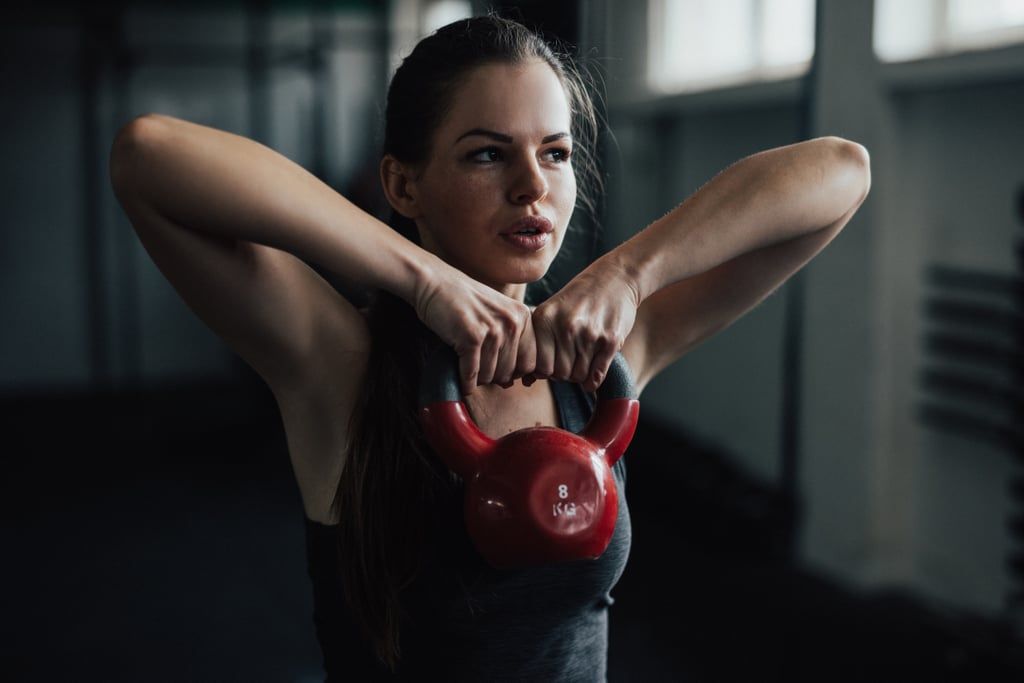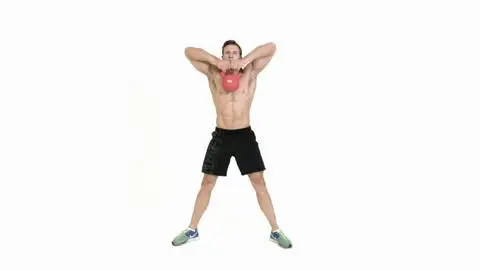
The best online fitness resource you'll ever need. We filter out the BS to ensure you meet your health and fitness goals!

The best online fitness resource you'll ever need. We filter out the BS to ensure you meet your health and fitness goals!

Kettlebell high pulls are a full body strength- and power- building exercise that engage your entire midsection, with great emphasis on the abs, hips and posterior chain. They work best at high volume, meaning they are perfect for elevating the heart rate, and can be performed either bi- or uni- laterally for flexibility of use.
They are best off as an accessory on deadlift or leg day, or when used in a HIIT, circuit or giant-set format for serious volume and a thumping cardiovascular workout.
Kettlebell high pulls typically make use of kettlebells (they can be performed with dumbbells, though perhaps less naturally and fluidly). As they use the full body, make sure you are nice and warm before you begin, with reasonable mobility through the hips and shoulders.
To perform kettlebell high pulls:
There is quite a lot going on here: it’s a relatively advanced movement. Therefore, if you’re just starting out, keep the weight nice and low. This won’t give you the same benefit to explosive power, but you will be able to learn the movement patterns and motor skills needed from such a complex movement.
Obviously, as you get more advanced, use larger weights. Feel free to use a weight in both hands, simultaneously.
If you have a weak lower back, consult a doctor or physiotherapist before working your posterior chain, especially in so explosive a manner. When you do go in for kettlebell high pulls, keep your back as straight as possible, engage your core, and bring all the power from the hips and legs.
You should feel your heartrate climbing rapidly during kettlebell high pulls- it’s fast, dynamic and explosive, and works well at high volume or combined with other full-body movements. Expect to grow out of breath- actually, expect to be sucking in air by the lungful.
For stability, pull the kettlebell into your shoulder at the top of the movement. Keep your wrists as straight as possible to maintain this stability and keep them safe. Take your elbow high for fuller power transference into the kettlebell and make sure it goes downwards through the same movement path as it comes upwards.
Kettlebell high pulls, much like other kettlebell movements, take a good deal of forearm and wrist strength. If you don’t have good gripping strength, start light and work up to heavier weights- your grip will improve quite quickly.
Finally, the kettlebell obviously comes up quite close to the face. Be careful not to lose your grip or lose control. If needs be, use chalk.

The kettlebell high pull is a full body movement, like many similar kettlebell movements. This means that you will be able to build muscle and power quite globally as you work, and the mind-muscle connection and coordination required and worked will be quite profound.
However, there are some areas that the high pull works more than others. These key muscles, groups and mechanisms come to the fore when performing them:
As many of these muscles interplay or form part of the posterior chain, kettlebell high pulls are great both for improving posture and for working explosivity as an assistance exercise to deadlifts. The pull at the top also brings in the muscles of the upper back (the rhomboids), which are used a lot more in deadlifts and contribute more to correct posture than they are ever usually given credit for. The improvement to wrist, forearm, and full grip strength will be incredibly useful as you transfer it over to your deadlifts.
As it is very technically involved, your coordination will benefit from perfecting kettlebell high rows. This goes for most kettlebell movements, in fact: this is one of their main overall benefits, and part of the reason most athletes should include them in their conditioning work. Finally, as with other kettlebell movements, kettlebell high rows are perfect for conditioning. They use a full array of muscles explosively, for either heavy or high reps, which means a lot of oxygenated blood and a lot of energy is used. This means they make for a hell of a cardiovascular workout and fat burner.